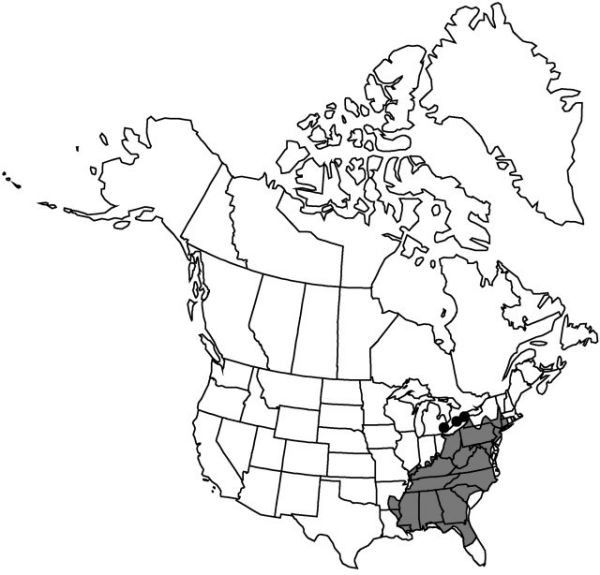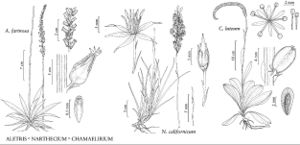Chamaelirium luteum
Manual, 503. 1848.
Staminate plants 5–20-leaved, 1.5–3.5 dm. Pistillate plants 15–50-leaved, 3–6 dm, 1.5 m in fruit. Leaf blades spatulate to oblanceolate, 5–20 × 1.5–6 cm, apex obtuse, tapering proximally to broad petiole, 4–6 cm; distal blades oblanceolate to linear, 3–8 × 1–1.5 cm. Staminate flowers divergent, white; tepals 3–4 mm; filaments dimorphic, the outer longer; anthers white, 0.5 mm; pistils absent; pedicel 2–5 mm. Pistillate flowers ascending, white; tepals 2–3 mm; staminodes present; ovary elliptic to obovate; styles 1.5–2 mm; stigmas sessile. Capsules ovoid-oblong, 7–14 × 5–6 mm. Seeds reddish brown, 1.8–2 mm; 5–6 mm (including winglike aril).
Phenology: Flowering late spring–summer.
Habitat: Moist meadows, thickets, rich wooded slopes, and coves
Elevation: 0–1100 m
Distribution

Ont., Ala., Ark., Conn., Del., D.C., Fla., Ga., Ill., Ind., Ky., La., Md., Mass., Mich., Miss., N.J., N.Y., N.C., Ohio, Pa., S.C., Tenn., Va., W.Va.
Discussion
Chamaelirium is rare in southern Ontario (J. H. Soper 1962; D. J. White et al. 1982) and quite local in several eastern states. The flowers turn yellow on drying, hence the specific name. The roots, called “starwort” or “unicorn root,” are used medicinally.
Selected References
None.
